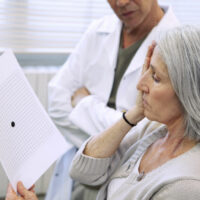10 ways to manage tardive dyskinesia

Tardive dyskinesia (TD) is a movement disorder that causes uncontrollable, abnormal, and repetitive movements in certain body parts. It is generally triggered by treatments that block dopamine receptors. Common symptoms include blinking rapidly, grimacing, lip smacking, repeatedly sticking out one’s tongue, repetitive finger movements, and pelvis thrusting. While addressing the underlying cause is crucial for managing tardive dyskinesia, the following lifestyle changes may also help improve one’s quality of life.
Manage other conditions
Comorbidities like diabetes, HIV, and brain injury may worsen the symptoms. Hence, patients should schedule routine visits (once every three months) with their healthcare provider. The expert can help manage these comorbidities to ensure they do not aggravate tardive dyskinesia. The doctor can also help prevent new conditions from developing. Patients must track their daily symptoms and inform the healthcare provider about any changes during the visit.
Eat the right foods
Patients must alter their eating habits based on the treatment plan. Some may benefit from lowering their protein intake at certain points of the day. Those struggling with nausea may eat non-protein crackers or other carbohydrate-rich snacks to control this symptom. Studies have also reported the importance of vitamin E in reducing tardive dyskinesia symptoms. Including more of this vital vitamin in one’s daily eating plan may help in the long run. Vitamin E can be found in foods like avocados, almonds, sunflower seeds, peanuts, and sweet red peppers.
Reduce stress levels
Since the symptoms tend to worsen with stress, those with tardive dyskinesia must work with an expert to recognize the stressors in their lives and avoid them. Patients may also manage stress better by practicing deep breathing exercises, meditating, or taking a class on mindfulness-based stress reduction. Spending time with loved ones or taking up a hobby class, such as art, music, or pottery, may help some people reduce stress levels. However, attending family or community events may sometimes trigger a stress response, worsening involuntary movements, so one should be mindful.
Engage in aerobic exercise
Regular physical activity or aerobic exercises like walking, swimming, rowing, and cycling may help reduce the symptoms in the long run. Studies suggest walking for 50 minutes in a pleasant environment may help reduce anxiety and overthinking and help support a positive mood. Patients can also consider practicing tai chi, a martial art with slow, gentle movements.
Join a support group
Many with tardive dyskinesia suffer from social isolation, which leads to or worsens anxiety and depression. Hence, patients can consider joining mental health support groups and forums. It is a great way to find people going through similar experiences. These groups let members share their experiences, feel acknowledged, discuss treatment plans, and learn new information. A quick browser search can help one find local support groups. Alternatively, individuals can consult a psychiatrist, psychologist, or social worker.
Prioritize good sleep hygiene
Tiredness or fatigue can make it more challenging for the brain to control movement. So, patients must adopt a sleep routine and healthy bedtime habits. For instance, one should stop using screens by evening time, including phones, laptops, tablets, and TVs. Most modern devices emit blue light, which can interfere with the production of melatonin, the sleep hormone. Fixing a time to go to bed and wake up every day may also help.
Reduce caffeine intake
Excessive caffeine consumption may worsen involuntary movements in some people. So, cutting down on caffeinated beverages like tea and coffee may help. Experts recommend avoiding any amount of caffeine after 5 p.m., as it may interrupt night sleep.
Seek feedback on involuntary movements
Many with tardive dyskinesia do not realize how much they are moving, which could cause insecurity. If comfortable, patients may seek feedback from friends and family members about their movements. An outsider’s perspective may help a person gain an objective view of their symptoms, and they can work with the doctor to curate a treatment plan accordingly.
Consult reliable sources
When it comes to managing health conditions, knowledge truly is power. Patients can check out credible sources, such as the National Institute of Neurological Disorders and Stroke, that share research about tardive dyskinesia. One may also speak to a doctor about ongoing research in the field. Arming oneself with this information can help one stay informed about their condition and better understand the course of treatment.
Deep brain stimulation
Doctors may recommend deep brain stimulation when other management options do not work. It involves attaching thin wires to some parts of the brain that control movement. These wires pass electric pulses and have been shown to reduce symptoms by up to 80%. However, visiting an experienced surgeon is crucial because it significantly impacts the treatment’s success. Common risks associated with deep brain stimulation include bleeding or trauma to the brain and some amount of verbal memory loss.
In rare cases, tardive dyskinesia may lead to severe complications like breathing difficulty, dental problems, difficulty swallowing, irreversible facial changes, or speech problems. Hence, individuals should visit an expert as soon as they notice its first signs. When someone visits the doctor with symptoms, they may recommend specific tests to rule out other movement disorders like Parkinson’s. These tests may include a physical exam, blood tests, and urinalysis to check for infections; an electroencephalogram (EEG) to measure brain activity; and an electromyography (EMG) to measure muscle response to nerve stimulation.
Tardive dyskinesia is an unpredictable condition. In most cases, it is an uncommon side-effect of specific treatments. While preventing it may not always be possible, one must remain mindful of the risk factors, which include age and comorbidities. Since treatment is generally aimed at symptom relief, recognizing the signs early gives people a chance at leading a better life. If one begins to experience difficulties in chewing, swallowing, or speaking or manifests facial changes like drooping eyelids, they must seek professional help immediately.



